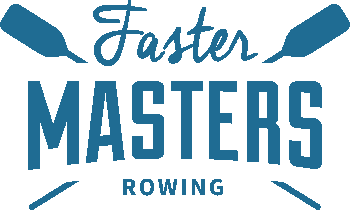Getting Tougher for your mental skills is important training in rowing. Marlene reviews James E. Loehr’s classic book The New Toughness Training for Sports: Mental Emotional Physical Conditioning.
Buy from Amazon https://amzn.to/3yI3fnm [affiliate link]
Timestamps
04:15 How tough are you? Have you ever thought to yourself, it’s never over until it’s over or never give up? Or said, I could have rowed faster if I had stayed concentrated in the second half of the race; I wasn’t thinking clearly. Building mental and emotional strength, an essential ingredient for success in rowing and sculling, is what James Loehr’s book; The New Toughness Training for Sports is all about. Loehr’s classic book covers issues related to recovery, understanding the language of emotion, signs of overtraining, the performer-self versus real-self, balancing stress and recovery, as well as the role of awareness in the mental toughening process. Loehr describes toughness training as “the art and science of understanding your ability to handle all kinds of stress-physical, mental, and emotional-so that you’ll be a more effective competitor.” It is a method of perfecting your sport skills while minimizing the risk of physical injuries and emotional setbacks that can result from overtraining. Loehr explains that a key element of toughness training is improving the routines used for recovery from stress during practices and between competitions to maximize an athlete’s potential so that the mind, body, and emotions will become more flexible, resilient, and strong.
What is toughness?
06:00 Common words that we associate with toughness; cold, mean, insensitive, or heartless, are not those included in the definition of toughness here. Phrases such as responsive under pressure, resilient, and flexible rise to the surface.
Loehr describes four indicators of toughness.
- First is emotional flexibility, which is “the ability to absorb unexpected emotional turns and remain supple, non-defensive, and balanced, to be able to summon a wide range of positive emotions (fun, joy, fighting spirit, humor) to the competitive battle.
- Second is emotional responsiveness, “the ability to remain emotionally alive, engaged, and connected under pressure. Responsive competitors are not calloused, withdrawn, or lifeless as the battle rages.”
- The third aspect is emotional strength, “the ability to exert and resist great force emotionally under pressure, to sustain a powerful fighting spirit against impossible odds.”
- Fourth, emotional resiliency, “the ability to take a punch emotionally and bounce back quickly, to recover quickly from disappointments, mistakes, and missed opportunities and jump back into the battle fully ready to resume the fight.” Simply defined, it “is the ability to consistently perform towards the upper range of your talent and skill regardless of competitive circumstances.”
How you need to feel
09:10 There are many athletic situations when the way that you really feel isn’t the way that you know you need to feel to perform at your best level. The way that you really feel is referred to as your real-self and the way you need to feel to perform at peak is referred to as your performer-self. Positive and negative emotions are constantly intertwined in our daily feelings. Positive emotions relate to balance and health, negative ones typically point to unmet needs. Every feeling serves a purpose and you will become a better athlete when you can respond to negative messages in ways that are appropriate versus blocking them out. To perform consistently under pressures at a high level requires that you have enough food, rest, sleep, and water. You must develop the capacity to move from the real-self to the performer-self on demand, which calls for precise thinking and acting skills. You also must be fundamentally physically fit. If your tolerance for physical stress is low your battle may be lost before it begins.
Acting tough
12:30 Performer skills include disciplined thinking and imaging skills that keep your emotions focused. In addition, physical acting skills that help you act the way you want to feel to achieve your ideal performance state.
This is your body language. The way you move intensifying whatever emotion you are feeling. Lastly, you have to learn new emotional responses to old problems. Just as your muscles need time and stimulation to grow, so do your emotional responses. You need to practice putting yourself into situations that help you train your reactions.
14:30 For racing this is why doing time trials and scrimmage races can be critical to improving your performances; you have the opportunity to practice new reactions. You can use words and images to control your performance state.
Learn how to tell yourself to hang in there, that is tough but you are tougher, that you can do what you want to achieve. Avoid showing weakness on the outside and let yourself know that you are right where you want to be so you stay passionate and fight no matter the circumstances.
Stress and recovery
16:00
Balancing stress and recovery is a major focus of Loehr’s book. He writes,
“Stress is anything that causes energy to be expended; it occurs physically, mentally, and emotionally. Recovery is anything that causes energy to be recaptured; it occurs physically, mentally, and emotionally. Unfulfilled needs represent forms of stress. Fulfillment of needs is recovery. In order to fight great battles in competition, your energy deposits should be roughly equal to your energy withdrawals. Your goal should be to enter battle fully recovered whenever possible. Balancing stress and recovery is fundamental to becoming a tough competitor.”
James Loehr
Like balancing your checkbook, these factors need to be kept in line. For example, when you are going through difficult emotional times be sure to include some fun into your day. To get tougher you need to “jump into the fire and jump out before you get burned” taking risks in life and competition is a natural part of developing strength.
Talking or writing provides powerful relief for dealing with emotional pain or turmoil. Spend time talking with your coaches, friends, or family about your problems or keep a training journal to help sort out your thoughts.
19:35 Work hard but recover equally as hard. Sharpen your saw regularly.
Your recovery schedule should receive as much attention as your training plan does. Sleep ranks number one when it comes to recovery methods. Get eight to ten hours of sleep every night, go to bed and get up within 30 minutes of your normal sleep times, learn to take short naps of 15-20 minutes whenever you can, and track your amount of sleep.
Eat a healthy well-balanced diet with adequate amounts of water and nutritious food. Enjoy both passive and active rest activities. Active rest can include walking, yoga, flexibility exercises, or easy outdoor games. Passive rest activities do not involve body movement; examples are laughing, meditating, getting a massage, watching TV, having a whirlpool bath, or taking a nap.
On a final note, the application of stress is the stimulus for growth but recovery is when you grow.
26:06 How in 1986 in preparation for the world championships, C.B. Sands-Bohrer and Christ Ernst practiced various race scenarios; they went on the win the gold medal in the women’s lightweight double.



